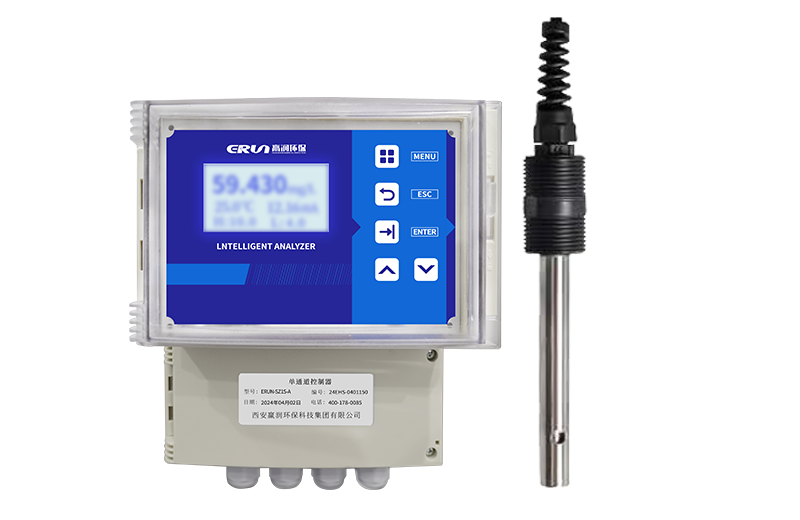Salinity, or the concentration of salt in water, is a critical parameter in various industries and environmental studies. A salinity meter is an essential tool designed to measure this parameter accurately and efficiently. Whether you’re managing an aquaculture farm, monitoring soil health, or studying ocean ecosystems, understanding salinity is key to ensuring optimal conditions. In this article, we’ll explore the purpose of a salinity meter, how it works, and its wide-ranging applications.

A salinity meter is a device used to measure the salt concentration in water or soil. It provides readings in units such as parts per thousand (ppt), practical salinity units (PSU), or percentage (%). Salinity meters are widely used in fields like agriculture, aquaculture, environmental science, and water treatment.
Salinity affects the chemical and physical properties of water and soil, influencing ecosystems, crop growth, and industrial processes. Here’s why measuring salinity is crucial:
1. Aquaculture: Fish, shrimp, and other aquatic organisms require specific salinity levels for survival and growth.
2. Agriculture: High soil salinity can harm crops, reducing yields and affecting food security.
3. Environmental Monitoring: Salinity levels in rivers, lakes, and oceans impact aquatic ecosystems and biodiversity.
4. Water Treatment: Monitoring salinity ensures the quality of drinking water and industrial water supplies.
5. Research: Scientists study salinity to understand climate change, ocean currents, and ecosystem health.
Salinity meters measure the electrical conductivity (EC) of water, which correlates with salt concentration. Here’s how they work:
1. Probe Insertion: The meter’s probe is immersed in the water or soil sample.
2. Conductivity Measurement: The device sends an electrical current through the sample and measures its conductivity.
3. Salinity Calculation: The meter converts the conductivity reading into a salinity value using a pre-programmed algorithm.
Some advanced salinity meters also measure temperature and automatically compensate for its effect on conductivity.
1. Aquaculture
- Maintain optimal salinity levels for fish, shrimp, and other aquatic species.
- Prevent stress and mortality caused by improper salinity.
2. Agriculture
- Monitor soil salinity to prevent crop damage and improve irrigation practices.
- Identify areas affected by saltwater intrusion or over-fertilization.
3. Environmental Monitoring
- Assess the health of rivers, lakes, and coastal ecosystems.
- Study the impact of climate change on ocean salinity.
4. Water Treatment
- Ensure the quality of drinking water by detecting salt contamination.
- Monitor industrial water systems to prevent scaling and corrosion.
5. Research and Education
- Conduct experiments to study the effects of salinity on plants, animals, and ecosystems.
- Teach students about water quality and environmental science.
1. Handheld Salinity Meters: Portable devices ideal for field measurements.
2. Benchtop Salinity Meters: High-precision instruments for laboratory use.
3. Pen-style Salinity Meters: Compact and easy-to-use for quick measurements.
4. Multiparameter Meters: Measure salinity along with other parameters like pH, temperature, and dissolved oxygen.
1. Calibrate the Meter: Use a calibration solution to ensure accurate readings.
2. Prepare the Sample: Collect a water or soil sample in a clean container.
3. Take the Measurement: Immerse the probe and wait for the reading to stabilize.
4. Record the Results: Document the salinity value for analysis and comparison.
- Accuracy: Provides precise measurements of salt concentration.
- Portability: Handheld models are easy to use in the field.
- Efficiency: Delivers quick results, saving time and effort.
- Versatility: Suitable for a wide range of applications.
1. Consider Your Needs: Choose a meter based on your specific application (e.g., aquaculture, agriculture, or research).
2. Check the Range: Ensure the meter can measure the salinity levels you need.
3. Look for Additional Features: Temperature compensation, data logging, and waterproof designs can enhance usability.
4. Evaluate Durability: Opt for a robust meter that can withstand harsh conditions.
A salinity meter is an indispensable tool for measuring salt concentration in water and soil. Its applications span aquaculture, agriculture, environmental monitoring, and water treatment, making it a valuable asset for professionals and researchers alike. By understanding the purpose of a salinity meter and how to use it effectively, you can ensure optimal conditions for aquatic life, crops, and ecosystems.